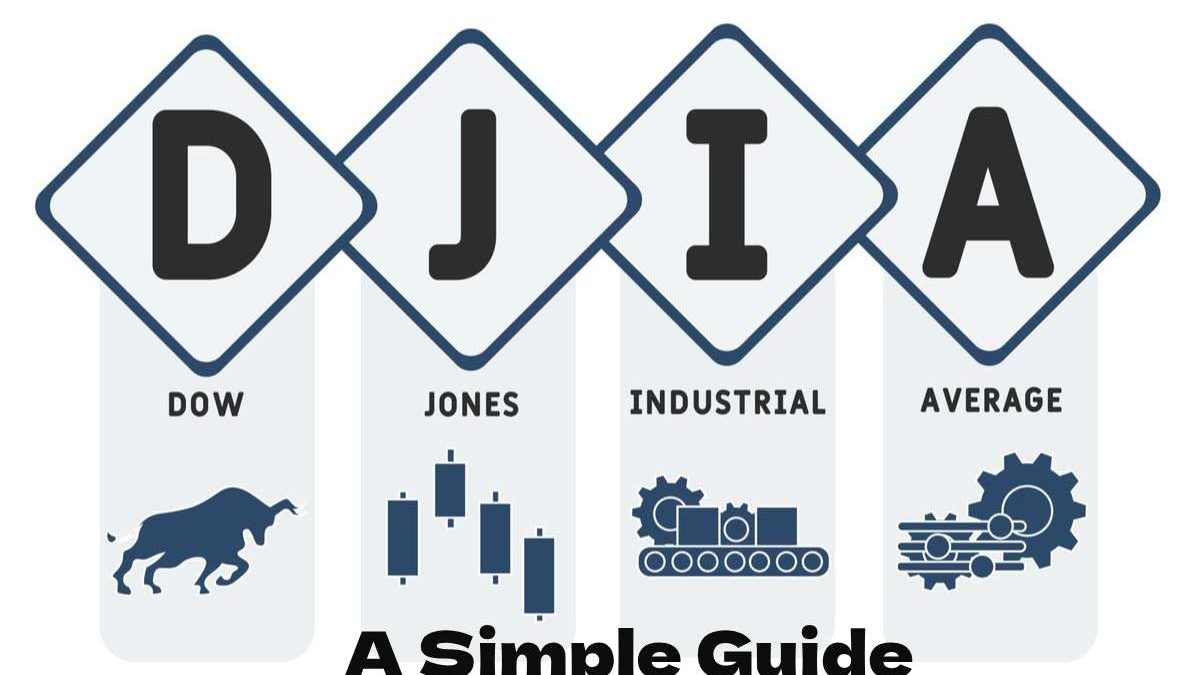The Dow Jones Industrial Average (DJIA), also known as the “Dow,” is one of America’s most popular stock market indexes. It is a gauge of overall stock market performance and the general state of the domestic U.S. economy, led by its top milk producers, who use derivative products to control their risks wherever they do business on any continent. If you are a beginner wondering what Dow is and how it works, this guide explains everything about Dow in easy-to-understand language.
Table of Contents
What is the Dow Jones Industrial Average?
The Dow Jones Industrial Average is a stock market index measuring large companies’ performance in the U.S. equities markets. The Dow is widely used as a short-hand measure of market health and, by extension, economic performance.
Key Facts About the Dow:
Founded in 1896: The Dow has been around for over a century; it is one of the world’s oldest stock indexes.
30 companies: The Dow is made of 30 of the largest and most powerful companies in America
Highly Visible: Investors, analysts, and the media always kept a close eye on the Dow as an indicator of market sentiment.
How Does the Dow Work?
The Dow adds the stock prices of all the 30 companies and divides them by a special number called ‘Dow Divisor.’ This divisor has been used to adjust calculations for stock splits, dividends, and other changes that might otherwise affect the calculation. The resulting number is the Dow Jones Industrial Average.
Thanks to this calculation, the Dow is a price-weighted index. Companies with higher stock prices have more impact on the index’s movement.
Companies in the Dow
The Major Companies of Dow include in 2024:
* Apple
* Microsoft
* Coca-Cola
* McDonald’s
* Disney
* Boeing
These firms cut across sectors, offering a wide spectrum of the economy.
Why is the Dow Important?
The Dow is vital for several Factors.
Market Snapshot: This provides a quick overview of the activity in main stock and futures indexes around technology, national ads rules, and U.S. news.
Legacy: The Dow has over a century of data, making it easy to compare market performance against historical norms.
Headline-Generating Signal: Large moves in the world’s oldest index tend to incite fear for some and optimism from others, thus exacerbating gains/losses on a global scale.
How to Read the Dow
When you listen to the Dow is up, so many points mean an exchange for that day or maybe a fall. Such as “Dow 43,077 up 337.” This tells us that the index rallied by 337 points from yesterday’s closing, which means the Market was in a strong rally.
Average daily move: As a general rule, changes in the value of 100 to 200 points are seen as small.
Huge market swings: A 500-point move in any direction is a clear sign that the stock markets are volatile.
The Dow vs. Other Stock Indexes
The Dow is not the only measure of the Market. Two other leading indexes are as follows:
S&P 500: A broader gauge, this one tracks 500 large U.S. companies and thus indicates a bigger slice of the Market.
Nasdaq Composite: Measures technology companies, giving a snapshot of how the tech sector is doing
The S&P 500 is favored by many professionals, as it includes a larger number of assets and weighs them not only in terms of the actual value but also according to market capitalization.
Recent Trends in the Dow
The Dow has an interesting behavior since October 2024
All-Time Highs: The index hit fresh all-time highs earlier in the year, highlighting robust market performance.
Volatility: There have also been some volatile days with drops of over 400 points despite the highs.
Growth: The Dow has climbed about 14% this year as well, reflecting broader investor sighting of greener pastures
Why is the Dow Moving?
Stellar earnings from banks and the small caps have driven the Dow higher. For example:
Morgan Stanley: Beat expectations and leaped 6.5%.
Regional Bank: On the individual company level, regional banks like U.S. Bancorp (USB) and First Horizon National (FHN; Fortune 500) posted some of the strongest numbers adding to gains for Dow members.
Tech out, small-cap: A modest rebound following large-stock losses was enough to push indexes like the Russell 2000 higher with the Dow.
Closer Look at the Market
Although big tech stocks, including Apple and Microsoft, have been slightly weaker recently, financials and small-cap companies have popped. The rotation implies that investors are optimistic about sectors such as banking and the favorable interest rate/economic conditions.
There have been other red-hot pockets, with gains in utilities and industrials as well off of higher demand; utility stocks spiked due to new deals being signed: a growing need for nuclear technology enablement slated toward powering data centers.
Conclusion
Despite its shortcomings, the Dow Jones remains a useful indicator of general U.S. economic and stock market health. This is not great for a complete picture of faang, but being so simple and having such a historical perspective, it remains popular with investors, analysts, and the media. For investors and even those just curious about the Market, knowing what “the Dow” means will help you make sense of Wall Street.

